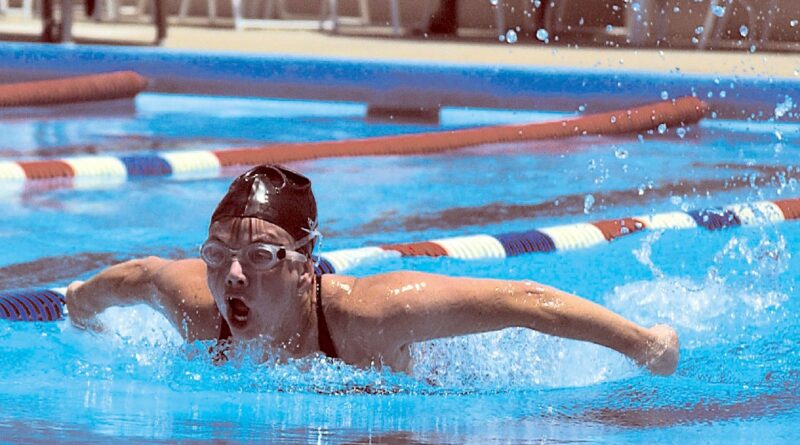Swimming Record
The Swimming Records That Have Stood the Test of Time
In the constantly evolving world of competitive swimming, where advancements in technology, training, and technique regularly push human performance to new limits, there exists a special class of achievements: the swimming records that have withstood the relentless march of progress. These are the marks that have stood the test of time, defying generations of athletes who have taken aim at them. The longevity of these swimming records speaks not just to extraordinary athletic performance, but to moments of perfection that transcended their era.
The Titans of Time: Records Measured in Decades
The Untouchable Standard: Michael Phelps’ Monumental Mark
While many of Michael Phelps’ records have fallen, one stands as a testament to his unparalleled versatility and endurance.
The Record: 400-meter Individual Medley
Time: 4:03.84
Year Set: 2008
Years Standing: 16+ years
The Significance: Set during his historic eight-gold-medal performance at the Beijing Olympics, this record encapsulates Phelps at his absolute peak. The record has survived multiple Olympic cycles and the careers of swimmers who specialized in just one of the four strokes Phelps mastered.
Why It Endures: The 400 IM requires excellence in butterfly, backstroke, breaststroke, and freestyle. Modern swimmers increasingly specialize, making it difficult to find athletes who can maintain world-class performance across all four disciplines. Additionally, Phelps’ unique physical attributes—his wingspan, torso length, and recovery ability—created a perfect storm that modern swimmers struggle to replicate.
The Iron Woman: Katie Ledecky’s Distance Dominance
While Ledecky continues to compete, one of her early records has become the benchmark for female distance swimming.
The Record: 1500-meter Freestyle
Time: 15:20.48
Year Set: 2018
Years Standing: 6+ years
The Significance: Ledecky didn’t just break this record—she demolished it by nearly 10 seconds, a staggering margin in a sport where records typically fall by hundredths of seconds.
Why It Endures: Ledecky’s combination of aerobic capacity, technical efficiency, and mental toughness creates a package that no contemporary has matched. Her ability to maintain sub-1-minute per 100-meter pace for 15 laps represents a level of sustained speed that continues to awe the swimming world.
The Historical Giants: Records from Bygone Eras
The Cold War Colossus: Mary T. Meagher’s Butterfly
In an era before high-tech suits and advanced sports science, one woman set standards that would intimidate swimmers for a generation.
The Record: 200-meter Butterfly
Time: 2:05.96
Year Set: 1981
Years It Stood: 19 years
The Legacy: “Madame Butterfly’s” record seemed almost supernatural when set. During an era of less sophisticated training and technology, Meagher’s mark stood through the entire careers of multiple generations of butterfly specialists.
Historical Context: When Meagher set this record, swimmers trained differently, pools were slower, and sports medicine was primitive compared to today. That her record survived the tech suit era and multiple Olympic cycles speaks to its incredible quality.
The German Juggernaut: Kristina Egerszegi’s Backstroke
The Hungarian phenomenon set a standard that would define backstroke swimming for the modern era.
The Record: 200-meter Backstroke
Time: 2:05.24
Year Set: 1991
Years It Stood: 21 years
The Legacy: Egerszegi set this record as a teenager and it survived the revolution in backstroke technique, the introduction of wave-killing lanes, and multiple equipment advancements.
Records That Survived Technological Revolution
The Pre-Tech Suit Standard: Ian Thorpe’s 400 Free
The Australian “Thorpedo” set a mark that would survive the controversial tech suit era.
The Record: 400-meter Freestyle
Time: 3:40.08
Year Set: 2002
Years It Stood: 9 years (through the tech suit ban)
The Significance: Thorpe’s record was set in a textile suit and survived the period when polyurethane suits made records vulnerable. When these suits were banned in 2010, Thorpe’s record regained its status as the benchmark until it was finally broken in 2011.
The Breaststroke Barrier: Mike Barrowman’s 200 Breast
A record that survived not just time, but a complete revolution in breaststroke technique.
The Record: 200-meter Breaststroke
Time: 2:10.16
Year Set: 1992
Years It Stood: 13 years
The Innovation: Barrowman pioneered the “wave-style” breaststroke, a radical departure from conventional technique. His record stood until technological advancements in pool design and suits finally surpassed his revolutionary technique.
Why Some Records Stand the Test of Time
The Perfect Storm Phenomenon
Enduring records often result from unique convergences:
Athlete at Absolute Peak: The swimmer was in the best condition of their career, both physically and mentally.
Optimal Conditions: Perfect pool temperature, ideal altitude, and favorable competition circumstances.
Technique Innovation: The swimmer introduced a new technical approach that others would take years to understand and replicate.
Competitive Environment: Being pushed by rivals in a specific race often produces times that can’t be replicated in time trials or less competitive heats.
The Human Element
Some records become psychological barriers:
The Aura of Invincibility: As a record stands longer, it acquires mythical status, making it mentally daunting for challengers.
Generational Impact: Young swimmers grow up viewing certain records as “unbreakable,” which can subconsciously affect their approach.
Comparative Obscurity: Some events attract fewer specialists, meaning fewer attempts at the record.
The Changing Landscape of Record Longevity
The Technology Factor
The evolution of swimming technology has created distinct eras:
The Textile Era (Pre-2008): Records set without performance-enhancing suit technology often have greater longevity.
The Tech Suit Period (2008-2009): Many records from this brief period fell quickly after suits were banned, but some have proven durable.
The Modern Era (Post-2010): Records are now broken more regularly as training methods plateau and the talent pool globalizes.
The Specialization Trend
Modern swimming increasingly rewards specialists over all-around swimmers:
Event-Specific Training: Athletes now tailor their training, physiology, and technique to specific events rather than multiple distances or strokes.
Fewer “All-Rounders”: The decline of swimmers who excel across multiple disciplines means fewer athletes attempt some of the more complex records like the 400 IM.
Records on the Brink: Which Marks Might Fall Soon
The Vulnerable Giants
Despite their longevity, some legendary records are showing cracks:
The Aging Standards: Records standing 8+ years are becoming increasingly rare in the modern era.
The New Generation: A wave of talented young swimmers is taking aim at records once considered untouchable.
Technique Evolution: Ongoing refinements in stroke technique continue to unlock new potential in familiar events.
The Next Frontier
The records most likely to endure share common characteristics:
Multi-Stroke Events: Records requiring excellence across different disciplines.
Distance Events: Where mental fortitude plays as big a role as physical ability.
Technique-Dependent Strokes: Where form efficiency creates advantages that pure power cannot overcome.
The Legacy of Enduring Records
Inspiration for Generations
Long-standing records serve important purposes in swimming:
Benchmarks of Excellence: They provide concrete goals for aspiring champions.
Historical Continuity: They connect current swimmers to the legends of the past.
Sporting Mythology: They create the stories and legends that give the sport depth and character.
The Measure of Progress
When a long-standing record finally falls, it typically signals a significant advancement:
Technical Innovation: A new approach to training or technique has emerged.
Genetic Lottery: An athlete with unique physical attributes has optimized them.
Global Expansion: The sport has grown in new regions, expanding the talent pool.
The Future of Swimming Records
The Limits of Human Performance
As records continue to fall, questions arise about absolute limits:
Physiological Barriers: Are we approaching the maximum human capacity for certain distances and strokes?
The Law of Diminishing Returns: Improvements are becoming increasingly marginal and difficult to achieve.
The Next Breakthrough: Whether through technology, training, or talent identification, the next leap forward will likely come from an unexpected direction.
The Eternal Pursuit
The enduring appeal of swimming records lies in their embodiment of human potential. Each long-standing record represents a moment when an athlete transcended not just their competition, but the perceived limitations of their era. As long as swimmers dive into pools with dreams of greatness, these records will stand as monuments to what is possible—waiting, challenging, and inspiring the next generation to reach just a little farther, push just a little harder, and swim just a little faster.
The true measure of these records’ greatness may not be in how long they stand, but in how they continue to motivate swimmers to achieve what once seemed impossible. In the constant flow of time, they remain fixed points of excellence—reminding us that perfection, however fleeting, is always worth pursuing.




